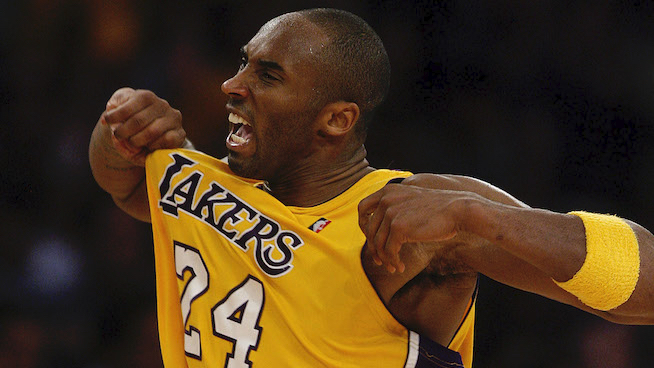How To Prevent Cliques On Teams
Successful sports teams require coaches, players, and support staff who work together towards a common goal. If some team members feel excluded, they may not fulfill their potential and contribute to the common goal. This exclusion can be perceived or real: the person does not know if they are being deliberately excluded or not. The emotion felt is the same. Coaches, players, and other staff may have good intentions but unwittingly do things that create cliques. This article shall give some ideas on how to reduce the chance of that happening.
What Is A Clique?
According to Merriam-Webster dictionary, a clique is:
‘a narrow exclusive circle or group of persons especially: one held together by common interests, views, or purposes.’
That could also be the definition of a sports team, where terms like ‘tight-knit,’ ‘cohesive,’ and ‘focussed’ are often used to highlight the benefits of harmonious team dynamics. Many teams become laser-focused on pursuing their goals, naturally becoming inward-looking and excluding distractions from the team. To outsiders, this looks like a clique but a functioning one.
The problem for teams is when the inevitable sub-groups splinter away and exclude other teammates, forming cliques. This is the common use of the term and is associated with dysfunction.
Why Sub-groups Form Within Teams
Players may congregate on the bus to:
- Listen to similar types of music
- Play cards or games
- Chat
- Homework
Players make friends on teams according to shared interests and then meet up at school or the mall and hang out. This is normal behavior.
A clique is formed when other people are deliberately excluded. A social media chat room is ‘invite-only’, not for the whole team. Players are ignored or told to go away when they sit in the wrong part of the locker room or on the wrong bus seat. One or two players are not being invited to a house party where everyone else is.
This can happen from elementary school to professional teams. It can lead to players being ostracised and then leaving. It can lead to teammates only passing to their friends. It can lead to bullying, bickering, and even fist-fights. All of which is a distraction from the common purpose of the team.
How To Prevent Cliques
It starts with the coach. It is important to remember that they are coaching people, not positions. They will not know everything that is being said or happens, especially outside of coaching time, but they need to be aware of who sits where and who hangs out together before the warm-up.
One player consistently being left out or a group pointing and giggling at another player or making comments in practice are signs that a clique is forming.
Tips
- Enforcing an ‘all-in’ social media policy. Everyone’s invited to the team chat forum, whatever that may be. Remarks and comments should be respectful and anything written should be assumed to be public, even when encrypted.
- Welcoming new players by buddying them up with veteran players. The new player will be nervous at any level of play, and having a player show them around rather than a coach helps them feel welcome.
- Change practice partners. Often coaches let players pick their partners for drills. This is a good idea to start because they want to play with their friends. After drill one, try rotating one person from each group clockwise. This forces change and ensure all teammates play with different people. It is great for team building because the players get to know each other and their abilities.
- Don’t have favorites. Even if you have a favorite player, you should make an effort to spend time with every player. This also applies to positions: you might favour the strikers in soccer, and they could form a clique of superiority. It’s important to spend time with other positions and publicly praise them.
Many cliques form on superficial lines and assumptions about other people. Communication between players and coaches and between players and other players helps change assumptions into knowledge. The coach who helps foster communication and interaction between groups is the one who is building a team rather than watching one fall apart.
RECOMMENDED FOR YOU
MOST POPULAR
How To Prevent Cliques On Teams
Successful sports teams require coaches, players, and support staff who work together towards a common goal. If some team members feel excluded, they may not fulfill their potential and contribute to the common goal. This exclusion can be perceived or real: the person does not know if they are being deliberately excluded or not. The emotion felt is the same. Coaches, players, and other staff may have good intentions but unwittingly do things that create cliques. This article shall give some ideas on how to reduce the chance of that happening.
What Is A Clique?
According to Merriam-Webster dictionary, a clique is:
‘a narrow exclusive circle or group of persons especially: one held together by common interests, views, or purposes.’
That could also be the definition of a sports team, where terms like ‘tight-knit,’ ‘cohesive,’ and ‘focussed’ are often used to highlight the benefits of harmonious team dynamics. Many teams become laser-focused on pursuing their goals, naturally becoming inward-looking and excluding distractions from the team. To outsiders, this looks like a clique but a functioning one.
The problem for teams is when the inevitable sub-groups splinter away and exclude other teammates, forming cliques. This is the common use of the term and is associated with dysfunction.
Why Sub-groups Form Within Teams
Players may congregate on the bus to:
- Listen to similar types of music
- Play cards or games
- Chat
- Homework
Players make friends on teams according to shared interests and then meet up at school or the mall and hang out. This is normal behavior.
A clique is formed when other people are deliberately excluded. A social media chat room is ‘invite-only’, not for the whole team. Players are ignored or told to go away when they sit in the wrong part of the locker room or on the wrong bus seat. One or two players are not being invited to a house party where everyone else is.
This can happen from elementary school to professional teams. It can lead to players being ostracised and then leaving. It can lead to teammates only passing to their friends. It can lead to bullying, bickering, and even fist-fights. All of which is a distraction from the common purpose of the team.
How To Prevent Cliques
It starts with the coach. It is important to remember that they are coaching people, not positions. They will not know everything that is being said or happens, especially outside of coaching time, but they need to be aware of who sits where and who hangs out together before the warm-up.
One player consistently being left out or a group pointing and giggling at another player or making comments in practice are signs that a clique is forming.
Tips
- Enforcing an ‘all-in’ social media policy. Everyone’s invited to the team chat forum, whatever that may be. Remarks and comments should be respectful and anything written should be assumed to be public, even when encrypted.
- Welcoming new players by buddying them up with veteran players. The new player will be nervous at any level of play, and having a player show them around rather than a coach helps them feel welcome.
- Change practice partners. Often coaches let players pick their partners for drills. This is a good idea to start because they want to play with their friends. After drill one, try rotating one person from each group clockwise. This forces change and ensure all teammates play with different people. It is great for team building because the players get to know each other and their abilities.
- Don’t have favorites. Even if you have a favorite player, you should make an effort to spend time with every player. This also applies to positions: you might favour the strikers in soccer, and they could form a clique of superiority. It’s important to spend time with other positions and publicly praise them.
Many cliques form on superficial lines and assumptions about other people. Communication between players and coaches and between players and other players helps change assumptions into knowledge. The coach who helps foster communication and interaction between groups is the one who is building a team rather than watching one fall apart.











